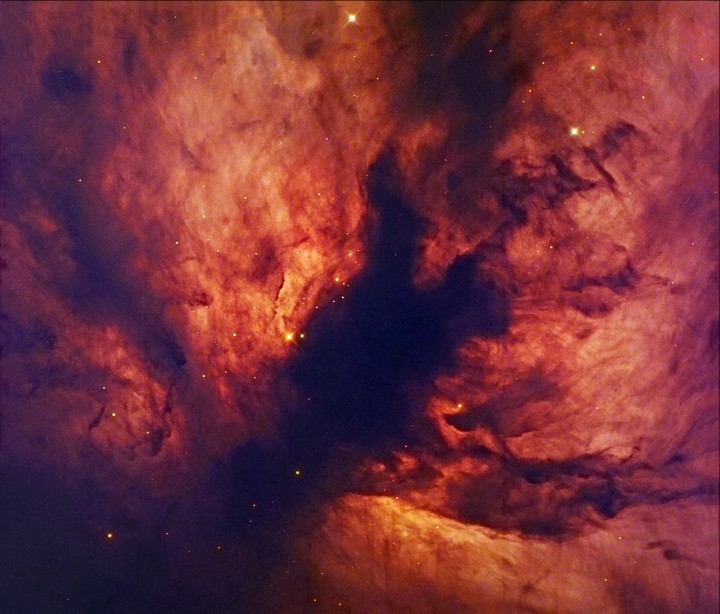
|
Credit & Copyright: Robert Gendler,
Jan-Erik Ovaldsen
Explanation:
Of course, the Flame Nebula is not on fire.
Also known as
NGC 2024,
the nebula's suggestive
reddish color is due to the glow
of hydrogen
atoms at the edge of the giant Orion
molecular cloud complex some 1,500 light-years away.
The hydrogen atoms have been
ionized, or stripped of their
electrons, and glow as the atoms and electrons recombine.
But what ionizes the
hydrogen atoms?
In this
close-up view,
a dark lane of absorbing interstellar dust stands out
in silhouette against the
hydrogen glow
and actually hides
the true source of the Flame Nebula's energy from optical
telescopes.
Behind the dark lane lies a cluster of hot, young stars, seen
at infrared
wavelengths through the obscuring dust.
A young, massive star in that cluster is
the likely source
of energetic ultraviolet radiation that ionizes the
hydrogen gas in the Flame Nebula.
|
January February March April May June July August September October November December |
| ||||||||||||||||||||||||||||||||||||||||||||||||
NASA Web Site Statements, Warnings, and Disclaimers
NASA Official: Jay Norris. Specific rights apply.
A service of: LHEA at NASA / GSFC
& Michigan Tech. U.
Based on Astronomy Picture
Of the Day
Publications with keywords: emission nebula - Orion
Publications with words: emission nebula - Orion
See also:
- Alnitak, Alnilam, Mintaka
- APOD: 2025 September 19 Á The NGC 6914 Complex
- APOD: 2025 September 10 Á The Great Lacerta Nebula
- APOD: 2025 July 21 Á Cats Paw Nebula from Webb Space Telescope
- APOD: 2025 July 16 Á The Rosette Nebula from DECam
- APOD: 2025 July 5 Á Ou4: The Giant Squid Nebula
- APOD: 2025 June 26 Á The Seagull Nebula
